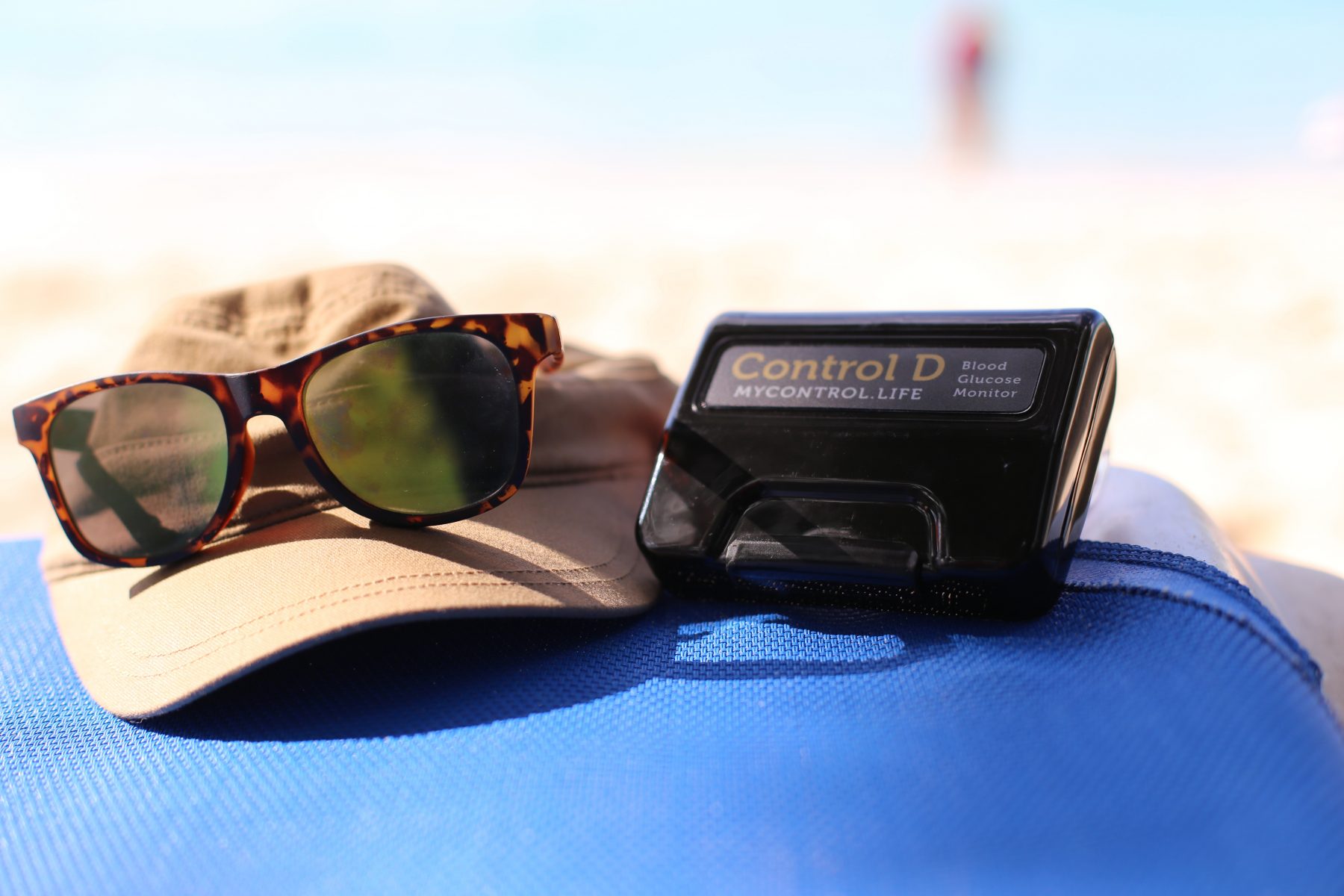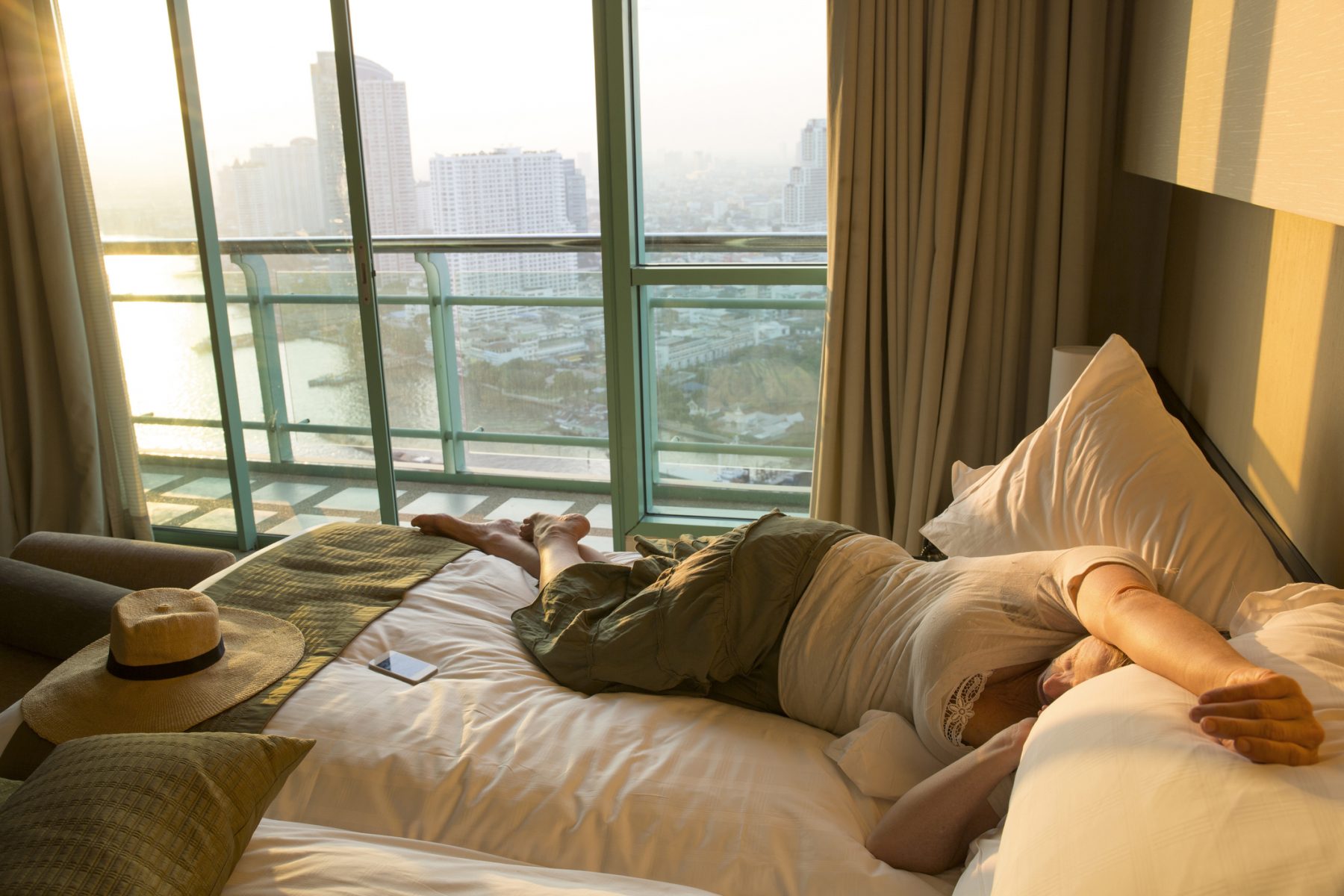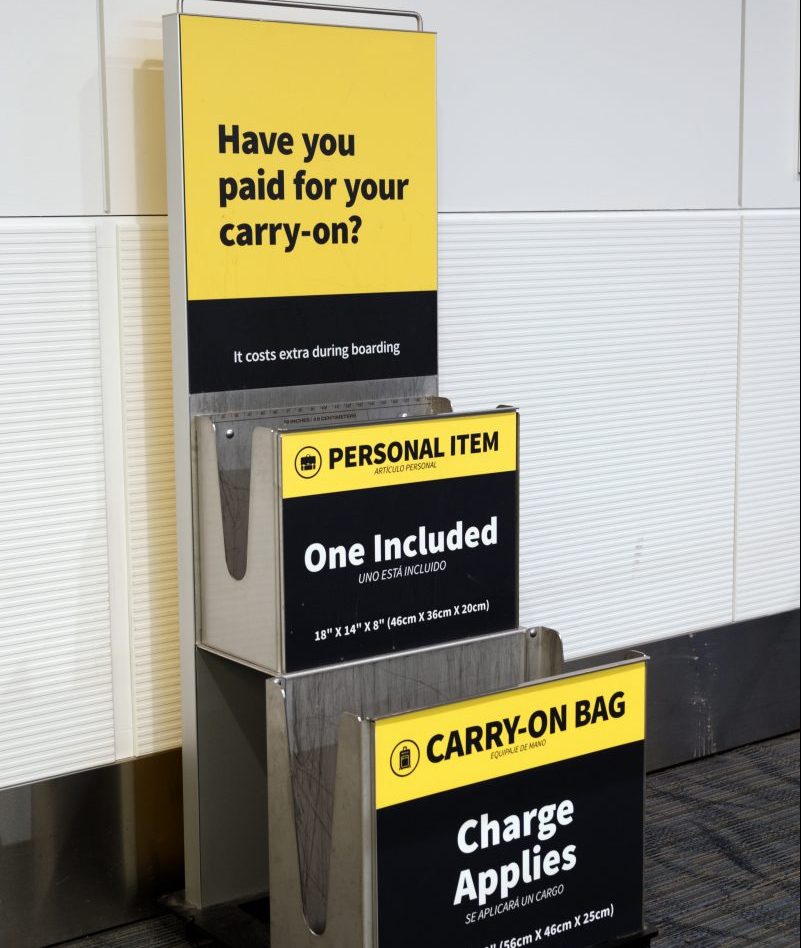Do you or your travel partner suffer from diabetes? Here’s what you need to know when traveling domestically
Signing up for credit cards through partner links earns us a commission. Terms apply to the offers listed on this page. Here’s our full advertising policy: How we make money.
Diabetes currently affects 34.2 million Americans. That’s more than one in ten people in the U.S.
The odds that either you or someone you love suffers from diabetes are alarming. It can be a difficult disease to handle, especially while you’re traveling. Whether you’re a diabetic with an ambitious bucket list or you’re traveling with a diabetic who needs your care, we’ll give you the need-to-know for your upcoming domestic travels.
Traveling during the COVID-19 pandemic has added another layer of stress to travelers. In the current situation, knowing how to manage your diabetes while traveling is even more important.
Just like anything else, each situation is very different and should be handled on an individual basis. Not all of these tips will apply to everyone with diabetes. After all, there are different types of the condition:
- Type 1
- Type 2
- Gestational
Here are some tips on how to manage diabetes while you prepare for a trip and during your travels.

Travel with confidence as a diabetic
With finding cheap flights, reserving the best hotels, mapping out activities, and planning finances, it’s difficult enough to construct the perfect trip WITHOUT worrying about diabetes. Managing your own diabetes or that of a loved one’s can make it that much more overwhelming. A few of my family members have diabetes, and we’ve learned to construct our vacation plans around meals.
But there are ways to quiet stress and amplify excitement for your adventure.
Preparing for your trip
One cardinal step you can take to prepare for your trip is to research pharmacies in the area you plan to visit. If you’re already mapping out activities and places to visit, consider including the locations on your map. That way you’re not scrambling for the best options during an emergency.
Gather documentation
It’s true that we’re living in a non-paperwork era. But nothing can ever replace a proper doctor’s note.
This is especially applicable to seniors and children traveling alone. However, it can’t hurt to have a conversation with your doctor about any recommendations they would give for traveling with diabetes. You might have questions like:
- Any vaccines you might need
- If you should expect any unusual effects from your upcoming activities
- If your insulin doses should be modified
Be sure to get the doctor’s appointment well ahead of time so there is no last-minute rush. You should also have a written prescription on your person. If you’re carrying syringes and/or insulin, it is important to carry documentation that the medication is for you specifically.
For an extra layer of protection, take a picture of the prescription and necessary documents with your phone. In the small chance your important documents get misplaced, you’ll still have a copy with you at all times.
Diabetes is considered a disability, so it is always a good idea to have documentation. And to be doubly prepared, keep in mind airport policies & accessibility options around the country. Here is a quick sample of airport wheelchair policies & accessibility options from a few of the busier airports in the United States:
| Airport | Accessible Restrooms | Handicap Parking | Wheelchair Service |
|---|---|---|---|
| Hartsfield-Jackson Atlanta International Airport (ATL) | All restroom facilities are fully equipped for wheelchair access. Four sets of “Men/Women” restrooms are located on each concourse. One set is located at either end, and two sets are centrally located on each concourse. Two sets are in the Airport’s Domestic Terminal atrium, including one set in the arrival’s lobby. Additional restrooms are located at the International Terminal, with a set on both the departure and arrival levels. Unisex family restrooms for those traveling with an attendant are located throughout the Airport: Domestic terminal arrival’s lobby (2) T2, T4, T8 and T12 A6 and A27 B9, B23 and B27 C15, C18 and C37 D4 and D32 F4, F6, F9, F12 Concourse F mezzanine level, departure level and arrival level An adult changing table is located in the family bathroom at Concourse F departure level near French Meadow Cafe. | Parking for passengers with disabilities is available in all Airport parking areas. Once you enter the parking lot, just follow the signs to the designated parking spaces, which are closest to the Airport’s terminals. Passengers with disabilities are encouraged to use the Airport “Park-Ride” facility, which offers convenient service to the domestic terminal. A free, wheelchair-accessible shuttle bus will pick up passengers at their vehicle and take them to curbside check-in. Vans taller than 8 feet should park in “Park-Ride” lots. Upon returning to Hartsfield-Jackson, “Park-Ride” customers are picked up at the ground transportation area. “Park-Ride” parking rates are $1 per hour and $9 per day. For additional information, contact ABM-Lanier-Hunt 24 hours a day at (404) 530-6725. | Airline representatives are available to provide wheelchair assistance. To reserve a wheelchair, contact the airline directly before your scheduled flight. Passengers with limited English proficiency should contact their airline for language assistance. Due to partial closures on the North Terminal roadways, passengers who need wheelchair assistance for drop-off between 9 p.m. and 5 a.m. should contact their airline’s wheelchair company at least five minutes before arriving at the Airport. Prime Flight (Air Canada, Alaska, American, Contour, Spirit and Turkish) – 404-530-7049 Prospect (JetBlue, Southwest and United) – 404-209-0503 |
| John F. Kennedy International Airport (JFK) | Each terminal has at least one wheelchair accessible restroom. If you need assistance locating one, just ask at the information booth located on the Arrivals Level in any of the terminals. | The terminals and parking lots at JFK are divided into five areas, each specified by a separate color. For your convenience, the parking lots nearest the terminal entrances have a limited number of spaces for travelers with disabilities. To park in the spaces, official license plates issued by a municipality or state of residence must be prominently displayed. Parking fees for these vehicles are equal to the lowest rate available at the airport. | Contact your airline prior to travel for wheelchairs. If you’re traveling with a motorized wheelchair, please ask the airline when you purchase the ticket about their policies regarding battery-operated wheelchairs. |
| Los Angeles International Airport (LAX) | Each terminal has at least one wheelchair accessible restroom. | All parking facilities have designated handicap parking stalls. | Requesting a Wheelchair To Request wheelchair service, it is recommended you contact your airline 72 hours in advance. Wheelchair service is provide free of charge by your airline. Tipping is not required for wheelchair service. Most individuals requesting wheelchair assistance are transported via wheelchair from ticketing to their aircraft. Airlines are required to provide curbside wheelchair service when requested. On your return flight, you should remind a flight attendant near the end of your flight, that you will need a wheelchair upon arrival. Curbside Each airline is responsible for providing wheelchairs for their customers with disabilities, from curbside drop-off to the aircraft. Contact your airline's reservation desk a minimum of 72 hours prior to your flight to reserve wheelchair service. Wheelchair service is provided free of charge. Tipping is not required. From Parking Structure Airlines are not responsible for providing wheelchair service from parking structures to terminals. |
| Phoenix Sky Harbor International Airport (PHX) | Each terminal has at least one family restroom with a private area to change clothing or disposable undergarments. Ask for directions at any information desk. | Accessible parking is available in all garages closest to the elevators. In the East Economy lot, accessible parking is available north of the PHX Sky Train Station. In the West Economy Park & Walk, accessible parking is available at the east end closest to Terminal 2. If you need extra time at the curb, Airport staff on the curb may issue Special Needs permits. Over height or oversize parking is available in the uncovered economy parking areas and Oversized Vehicle parking area east of Terminal 4. | Request a wheelchair when checking in and tell a flight attendant during the flight. If you are departing, you may request a wheelchair from a Sky Cap at the curb or from a Sky Cap or the airline on the ticketing level of the terminal. You can also request wheelchair service ahead of time when you book your tickets with your airline. Ask your airline about traveling with power chair batteries. |
| San Francisco International Airport (SFO) | Companion Care Restrooms for travelers needing companion assistance are located in all terminals, pre-security and post-security. | All airport parking facilities have convenient parking for vehicles displaying a: DP (Disabled Person) license plate DV (Disabled Veteran) license plate Disabled Parking placard The Domestic Garage has standard parking at all levels. Van accessible parking is available through ParkVALET on Level 4 Departures near Terminal 1, Boarding Area C. International Garages A and G have standard and van accessible parking at all levels. In Long-Term Parking, accessible parking spaces for standard and van accessible vehicles are located on the first (ground) floor. SFO's Long-Term Parking shuttle buses are wheelchair accessible. | Travelers requiring wheelchair assistance are encouraged to advise their airline of their needs when making flight arrangements. Upon arriving at the airport, travelers with wheelchair or other special requests should approach an airline representative for assistance. At Domestic Terminals 1, 2, and 3, airline staff can be approached at curbside and check-in areas. At the International Terminal, please proceed to your airline's assigned counter or dial 1-6210 from specially marked phones at all terminal entry doors. Arrangements for assistance to and from other locations at SFO can be made with your airline. |
Contact your airline’s customer service center for further questions and assistance while traveling with someone with diabetes. Be sure to check for any new travel updates directly related to COVID-19 restrictions, delays, or changes.
Bring a schedule
As you’re traveling, be sure to consider time zones.
Because we are all prone to some level of jet lag, this can significantly affect daily routines, including eating and time of insulin injections. If you don’t establish a schedule, your journey can quickly railroaded with the potential fluctuation of blood sugar levels.

Pack healthy snacks
It’s vital to carry healthy snacks in case you or your travel buddy are running on low blood sugar. We all practice irregular eating habits when we travel, whether it be indulging in unhealthy food, drinking more than normal, or not getting enough water.
While in the middle of the Coronavirus pandemic, open restaurants and healthy snack options are few and far between. This makes it even more important to have snacks available at all times for those traveling with diabetes.
Eating out at a diabetes-friendly establishment isn’t always cheap, so bring and use your favorite restaurant rewards card to get the best bang for your buck on food purchases. It’s a nice way to get a return on the money you’d spend anyway.
You can also take control of your diet by packing your own food, including items you know are diabetes-friendly, like:
- Cheese and crackers
- Apples and peanut butter
- Hard-boiled eggs
- Trail mix
- Beef sticks
- Dried fruit
- Yogurt
It’s good to mix a few non-perishables in there to ensure you’ve always have some sustenance in your back pocket. This can be the difference between an enjoyable adventure or an unfortunate trip to the hospital.
Hitting the road
With the ongoing pandemic, car travel may be the safest option for those traveling with diabetes. A crowded plane or airport can increase exposure to the virus, making this form of travel riskier than traveling by car.
Just as you go to the doctor’s for a check-up prior to a vacation, take your car for a check-up, too!
If you are planning to head out for a road trip, be sure to take your vehicle in for an inspection at least a week before you hit the highway. If there’s something wrong with your vehicle, you’re giving yourself a few buffer days between a potential problem and your vacation.
However, do consider renting a car. Sometimes it makes sense to pay for a cheap rental car and put the miles on a vehicle that’s not your own. And if you do decide to rent a car, be sure to explore all of your options when it comes to using a travel credit card for your car rental — many cards offer rental car insurance as a benefit, meaning you don’t have to pay for the pricey coverage the agency will try and sell you. Along with that, be sure to use a card that will give you the biggest return on gas purchases.
If you’ve got room, consider bringing extra medical supplies and snacks. If you’re making a long drive through parts of the country where medical access isn’t readily available, you’re obviously going to want as many fallback solutions as you can get. Bring enough food to account for low blood sugar, and pack a cooler for insulin in case you are traveling through high temperatures (not directly on ice, though!).
Lastly, driving can be extremely tiring. Whether you are driving or not, being cooped up in a car for hours on end is taxing. Taking frequent breaks will allow everyone to stretch, keep blood flowing and prevent fatigue.
Traveling by air
While traveling by air is a bit more luxurious, it can still be hard on your body.
Notify the proper people
If you decide that flying is your best mode of travel, be sure to let the appropriate people know (for example, your flight attendant while you’re boarding the plane). Also, let the attendant assigned to your section know you have diabetes or you’re traveling with a a person who suffers from diabetes.
That way they’ll understand when you press the call button and request a cup of juice to stave off hypoglycemia. During the pandemic, food and drink service has been negatively impacted in-flight, so know the airline’s stance before you head to the airport. This is particularly wise thing to do if you’re traveling alone.
In the same vein, you can even use a TSA notification card that will make your airport security process a little less of a headache.
Store medication in your carry-on bag
Medications should always be stored in your carry-on bag instead of your checked bag. This way you’re able to:
- Keep your diabetes medicine temperature-stable
- Have easy access to medication in case you need it
- There’s no risk if you checked bags get lost, stolen, or sent to the wrong location
Remember, diabetics don’t have to abide by the 3.4-ounces-of-liquids rule like everyone else when going through airport security.
Take advantage of this rule by having all your medication and diabetic supplies in your carry-on bag plus snacks and drinks. Bring more than you think you’ll need because you never know when you might need them!

Keep COVID-19 in mind
Unfortunately, the timeline for when the pandemic will be under control is unknown. In most areas of the country and around the world, travel is not recommended or strongly discouraged.
However, sometimes staying home isn’t an option, making travel by car or air a necessity. If this is the case, as a person with diabetes or someone traveling with a diabetic, it’s best to be fully prepared so your trip goes smooth and you don’t run out of supplies.
Bottom line
Just like anything else in life, preparation is key to ensure a smooth and enjoyable experience. If you or someone you are traveling with is diabetic, preparing ahead of time could save you from a potentially life-threatening situation.
Diabetes shouldn’t stop you from seeing the world!
Editorial Note: We're the Million Mile Secrets team. And we're proud of our content, opinions and analysis, and of our reader's comments. These haven’t been reviewed, approved or endorsed by any of the airlines, hotels, or credit card issuers which we often write about. And that’s just how we like it! :)


Join the Discussion!